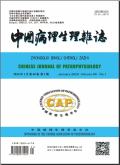Lactate-a suicide mode or survival kit
Cellular energy status is often believed to be crucial in the patho physiology of severe acute diseases involving sepsis or trauma such as multiorgan failure, mu ltiorgan dysfunction syndrome, systemic inflammatory response system, etc. Wit h this in mind increased blood lactate, mainly considered only as a marker or t issue hypoxia is a classical tool used to assess the severity of the illness an d to predict the pejorative outcome. However, during the past years the actual r ole of hypoxia in the pathophysiology of such acute diseases with an increased b lood lactate has been questioned.The association between increased blood lactate concentration and poor prognosi s in ICU patients is well documented but it is clearly not a cause-effect relat ionship. It is similar to what occurs in the case of increased blood ketone I n severe insulin deficient state and it would be a major understanding to be lieve that lactate is a toxic compound in acute states. In acute illness, incre ased lactate concentration or lactate metabolism can be due to the combination of various origin in which the role of splanchnic bed is prominent. In the case of strong reduction in oxygen delivery, such as severe shock, it is quite clear that there is a relationship between cellular energy defect and increased lact ate production. But even in these cases a decrease in lactate metabolism (eithe r oxidative or recycling routes) may also be involved. In septic states, the ro le of blood lactate is a matter of controversy and several reports have e mphasiz ed the fact that hyperlactatemia in sepsis was not due to the oxygen d eficit. It has been shown that mild hyperlactatemia in stable septic patients was due to an impaired lactate clearance rather than overproduction. Besides the main conc lusion that any therapeutic attempts to increase oxygen delivery in such situa tion may not be adapted, another point can be raised concerning the meaning of s uch lactate increase. In fact, increased blood lactate concentration in such sta tes might not be a deleterious event but rather an adaptive response, as in th e case of hypoxia.The pathway of lactate metabolism and its regulation has long been known and it s role as carbon shuttle has been extended to all organs and to energy or redox shuttling. Indeed, lactate must be viewed as a key metabolic intermediate betwee n cells or organs for energy metabolism. Erythrocytes, anaerobic cells, produce ATP by the non-oxidative glycolytic pathway with lactate release while liver which produces ATP from β-oxidation, uses this energy to synthesize glucose fr o m lactate. Hence, by recycling the carbons between lactate and glucose, the liv er actually “respire” for the erythrocyte mass. Since almost all cells can be e ither lactate producers or consumers in view of the whole-body energy economy. In the situation of chronic hypoxia, plasma lactate is increased and this is s upposed to be due to an increased peripheral lactate production. An experiment that has been undertaken on liver lactate metabolism with hypothesis that in vivo would lead to an enhanced liver lactate uptake (since recycling gluc ose- lactate was supposed to be increased), surprisingly showed that a very clear inh ibition was located at the phosphoenolpyruvate carboxykinase whose transcription was depressed by hypoxia. Hence, the net result of hypoxia on lactate metaboli sm is an increase in the steady state of lactate of blood lactate concentratio n due to the inhibition of liver lactate metabolism and the question arises of the metabolic meaning of such increase in lactate.The increase in lactate might be viewed as a key metabolic event permitting to modify the cell metabolism according to the new condition of hypoxia. In norm oxic condition the concentration of lactate, release by red blood cells is low and it is mainly recycled via liver gluconeogenesis. In peripheral tissues, su ch as muscle or heart, the main substrate is the glucose which is oxidized to CO2 only a small part being possibly released as lactate. During hypoxia, the co ncentration of lactate is higher, due to the liver inhibition and then in many tissues (muscle) the competition between lactate and glucose as carbohydrate s ource for oxidation might be in favor of lactate. This permits to spare some gl ucose for the privileged tissues such as heart. This has been shown in humans w here chronic hypoxia led to an increase glucose in heart. In acute situation, our recent investigation in cardiac surgery patients usin g an exogenous lactate challenge, whereby one could investigate the dynamic asp ect of lactate metabolism (lactateproduction, lactate clearance) together with other previous similar work (including liver surgery and brain metabolism) showe d that the increased lactate concentration permits an increase of substrate read ily oxidizable even after a transient period of hypoxia or ischemia. Furthermore , by permitting shuttle energy, redox power or carbons from one organ to another , lactate metabolism allows an intra- or interorgan cooperation which in turn l imits the energy failure of one organ by metabolism of another such as the liver for example. Although high lactate is related to poor outcome, this compound I s a “survival kit” rather than a “suicide mode”.
chronic hypoxia、acute diseases、inflammatory response、energy metabolism、adaptive response、cardiac surgery、energy economy、liver surgery、steady state、blood cells
17
R3(基础医学)
2004-01-08(万方平台首次上网日期,不代表论文的发表时间)
共2页
1099-1100








